In part one of this posting, I looked at two recent statements from China regarding the role of its military and how its position as a world power will evolve over time. In this posting, I will take a closer look at how busy China has been in the heavily disputed South China Sea region, located along in the area between mainland China, Taiwan, Malaysia, Indonesia and the Philippines. As you will see, China, in particular, has been very busy in the disputed region as have two of its neighbours.
As a reminder, here is a map showing the disputed region:
The numerous Spratly Islands (an archipelago or island group or island chain) are located more than 1000 kilometres from the Chinese mainland. The largest of these islands is about 90 acres in size. These islands have a long history of in a very strategic location for both military and shipping purposes with the French holding the islands between 1933 and 1939, losing control when Japan took over control during World War II, developing a submarine base in the archipelago. Japan renounced its claims to the islands in 1951 and mainland China, Taiwan, Vietnam, Malaysia and the Philippines all laid claim to some portion of the Spratlys over the following decades. While that recent history is interesting, according to recent commentsby the Chinese ambassador to Australia, China was the first country to discover and develop the islands, dating back to the Han Dynasty in the era between 23AD and 220 AD. This means that China regards the Spratly Islands as part of its territory and, as shown in the previous posting, will act to protect its sovereign territory through the use of its growing military muscle.
Here is a map that more clearly shows China's claim line:
It is becoming increasingly apparent that numerous previously submerged reefs or coral atolls are being transformed into military installations by China in an effort to solidify its hold on the territory. Here are two examples:
2.) Fiery Cross Reef: a new harbour has been dredged that allows quick access to waters greater than 2000 metres deep close to shore making the harbour an ideal location for a submarine base. As well, it appears that a 3.3 kilometre long runway is under construction on reclaimed land:

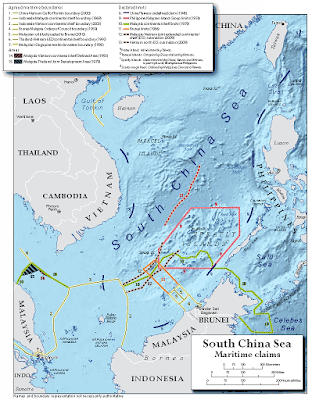


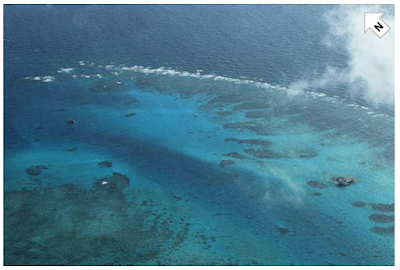
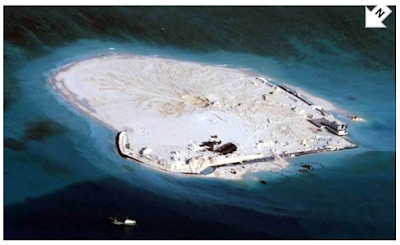
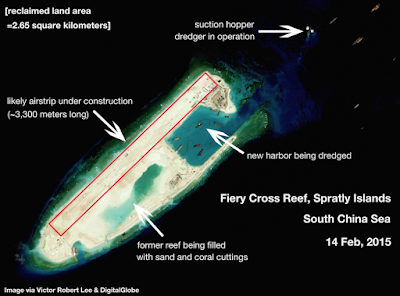
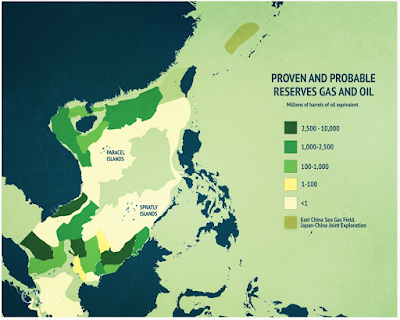
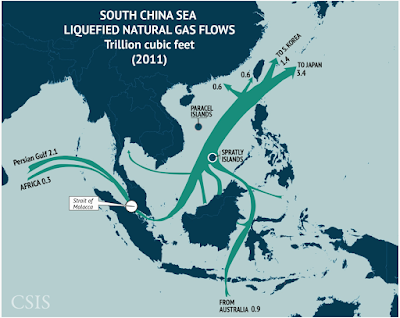
Be the first to comment